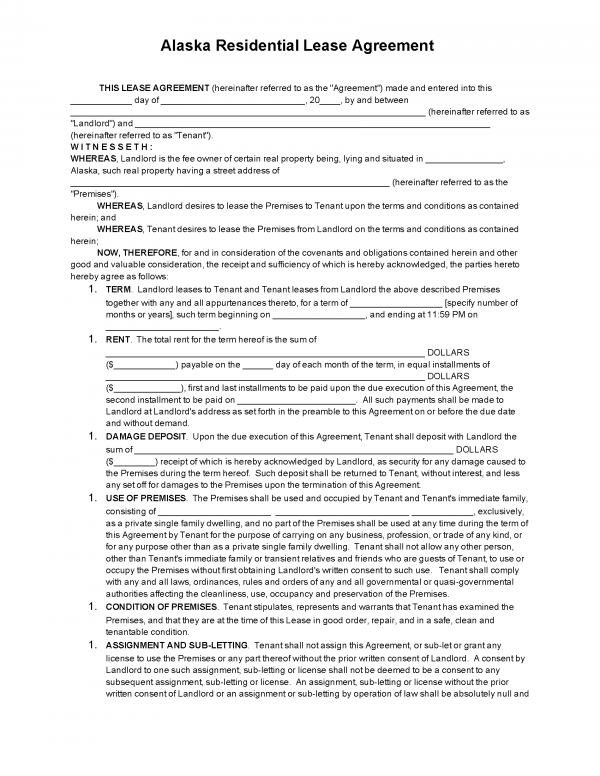

An Alaska residential lease agreement creates a rental arrangement between a tenant and landlord over the use of the property during the time span. The landlord may ask to check the credit and background of the person looking for a lease to ensure that an eviction will not be likely in the future.
Once the parties have agreed and a contract is signed, access to the premises will be available to the tenant immediately. The tenant and landlord will be obligated to abide by the terms and conditions of the lease until the end of the term.
Maximum Amount ($) – Two (2) months’ rent. No cap if the monthly rent is more than $2,000 (AS 34.03.070(a)).
Returning – Fourteen (14) days if the tenant did not violate the lease. Thirty (30) days if the tenant violated the lease and owes the landlord or if there is damage to premises after the tenant vacated the property. (AS 34.03.070(g))
Lead-Based Paint – If the property was constructed before January 1, 1978, this disclosure must be completed and signed by the landlord.
Property Manager – The landlord agrees to either give their information (name and address) to the tenant or someone that is authorized on their behalf to access the premises (§ 34.03.080).
Tenant’s Absence – This statement must be written in the lease agreement: “If the tenant does not occupy the premises for a period of more than seven (7) days, it is agreed that the landlord shall be informed.” Therefore, if the tenant does not notify the landlord of such an absence, they would be in direct violation of the lease (§ 34.03.150).
No grace period in Alaska. Rent must be paid by the date listed in the rental agreement (AS 34.03.020(c)).
